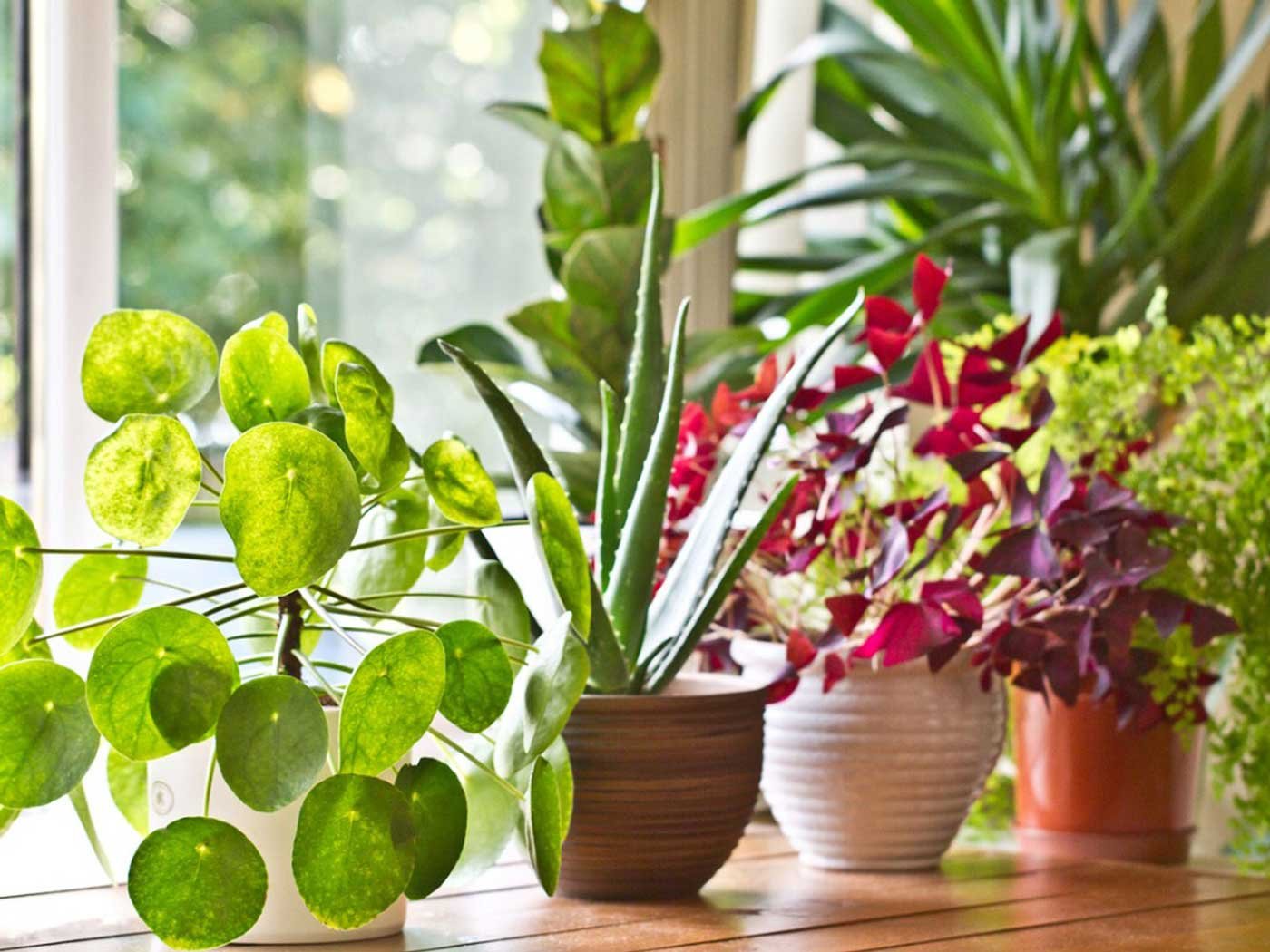Gardening or adorning your house through plants is one of the most enjoyable hobbies. The leaves blooming out of the pots in various colors and patterns give a pleasure that is similar to nurturing your child. However, beginning this pleasureful activity is entailed with numerous ‘if’ and ‘but’.
To overcome your anxiety and answer the unsolicited questions, here is a list of the best houseplants for beginners. They are all low-maintenance plants and can thrive in varying conditions. They will also become your best friends by cleaning the surrounding air.
For learning more about the best houseplants for beginners, you must consider the list of plants provided below:
Golden Pothos vine
The tropical vines belonging to the Araceae family are one of the easiest growing houseplants. The plant is widely popular for its shiny heart-shaped leaves that possess golden, white, and yellow variegations. The trailing vines can be grown even in pots or hanging baskets.
The plant having a fast growth rate is often observed growing aggressively out of the hanging baskets and giving a fresh look to the terraces. The pathos is low-maintenance plants and keeps adorning your house even if you forget to water them regularly. With little care and time, you will observe fresh, mottled, and shiny heart-shaped leaves.

Spider plant
The spider plant is also known as spider ivy or ribbon plant. It is one of the most adaptable and easily manageable houseplants. The distinctive look of the spider plant is because of its thin, long, arched leaves that are bright green with white variegations.
These plants especially look exceptionally beautiful if grown in hanging baskets. And this beauty is due to its spiderettes dangling down from the mother plant just like spiders on a web. Providing them a well-drained soil-based potting mixture, adequate moisture, and bright indirect sunlight will enable them to bloom at a quite fast rate.
Keeping the spider plant also offer some benefits like air purification, cleaning airborne irritants, ozone absorption, and therapeutic benefits. Moreover, its leaves are also edible and can provide healing and relaxing effects in case of different diseases.
Beefsteak Begonia
If you are fond of bright, shiny, and glossy foliage then beefsteak begonia is the best choice for decorating your house. The leaves with deep red and deep green color resembling a beef steak give a stunning look to the plant. These plants express their fullest beauty in hanging gardens.
This tropical plant is an old variety and is no longer available in the stores. The majority of people owning beefsteak begonia have been cultivated by either their friends or relatives. These tropical plants are not demanding at all, however, providing the right growing conditions is necessary for avoiding their slow death.
Snake plant
Snake plant belonging to the Asparagaceae family is native to tropical and subtropical areas of Asia, Africa, and Europe. The snake plant is also known as the mother-in-law’s tongue. The plant is resilient succulent and can grow anywhere from 6 inches to several feet.
Apart from exceptional beauty, placing this plant either near your side table or within your living area is entailed numerous benefits. For instance, it filters the indoor air even during the night, removes all toxins and pollutants, and improves the quality of air. While caring for this plant, you must avoid over-watering it and keep it in indirect sunlight.
Dracaena Species
A large number of Dracaena’s varieties are suitable as indoor plants. The D. Darco and D. marginate are the best options for beginners as they can grow in a variety of conditions. These plants possess arched green-colored leaves rising in the upward direction from the woody stem. The leaves may possess three colors that add spectacular beauty to your house. These tropical plants are fond of indirect bright light and overwatering may cause root rot or even lead to their death.
Bromeliads
In case you like varying color foliage and flowering plants, then you must add Bromeliads to your houseplant collection. Bromeliads are slow-growing and long-lived houseplants. These showy plants can easily grow within the indoor environment. The splashy flower displays, varying color leaves (red, green, purple, orange, and yellow), stripes, bands, spots, and other features give them a distinct look.
These slow-growing plants generally take one to three years to mature and produce flowers. The blooming conditions for every genus and even species within a genus are different, therefore, you must provide growing conditions according to the genus and species of your Bromeliads.
Lucky bamboo
For folks who increasingly believe in luck, a bamboo plant is an auspicious option. The plant is considered to bring luck, peace, prosperity, fortune, and wealth along with. The adjustable stem of the plant is responsible for its wide use in decorating and styling the home in different ways.
These plants are available in different varieties and sizes ranging from small-sized plants in glass vases to larger ones in pots. It is not only the easiest growing houseplant but also possesses friendly nature. The plant apart from bringing luck for its owner also purifies the surrounding air and makes it worth breathing.
Succulents and Cacti
The numerous varieties of succulents and cacti act as good houseplants because of their adaptable nature. The succulents are desert plants having fleshy thick leaves. In some cases, the leaves also have thorns on them. Agave, aloe, and echeveria rosettes are some succulent plants that are widely grown as houseplants.
Cacti on the other hand possess interesting leave structures with spines, barrels, paddles, and columns. They express them fully in the presence of bright light, well-drained soil, and little water.
Hence, you must not wait and start decorating your house with some of these plants. These plants will not only evaporate all of your fears but also make you fall in love with them. And this love will inspire you to plunge deeper into the sea and begin the chain of adding more houseplants to your auspicious collection.

